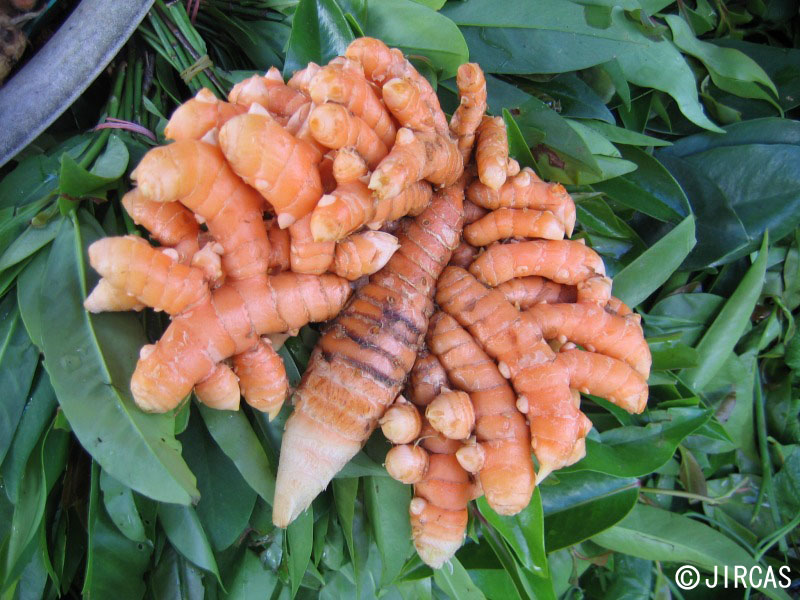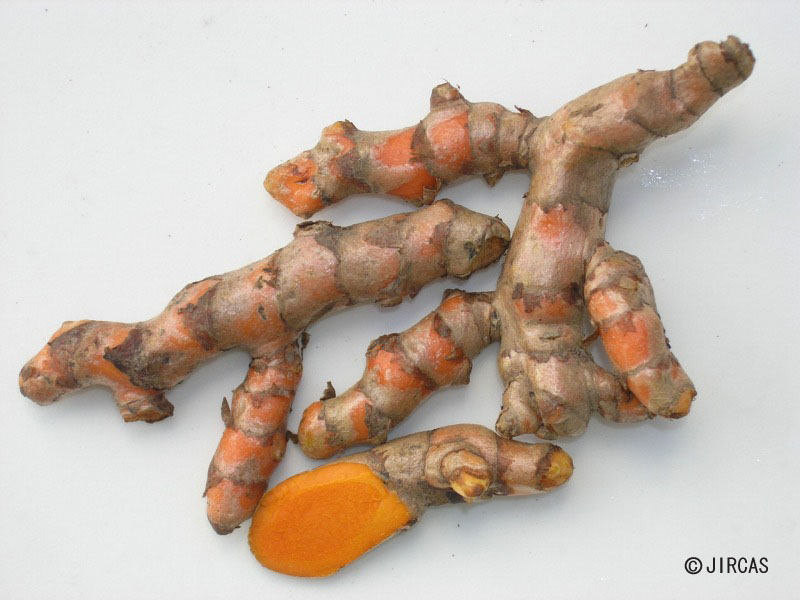Curcuma longa L. (Zingiberaceae)
- Scientific name
- Curcuma longa L.
- Family name
- Zingiberaceae
- Common name
- Turmeric (English); ukon (Japanese)
- Local name
- Khamin
Erect perennial herb, strongly tillering, up to 1.2 m tall. Rhizome complex, with an ellipsoidal primary corm bearing numerous straight or slightly curved, cylindrical, lateral rhizomes when mature, that are again repeatedly branched at more or less right angles, the whole forming a dense clump; rhizomes orange-yellow to bright orange, young tips white. Aerial shoot with 5–10, alternate, distichous leaves, surrounded by bladeless sheaths compressed into a short pseudostem; ligule small, membranous, early caducous; petiole 1–10 cm long; blade oblong-lanceolate, up to 70 × 18 cm, base cuneate to rounded, apex acute to caudate. Inflorescence terminal, erect, spike-like, arising from centre of leafy shoot; peduncle terete, up to 20 cm long, covered by pubescent, bladeless sheaths or scales. Spike cylindrical, up to 20 × 8 cm, bearing numerous, spirally arranged bracts; bracts elliptic-lanceolate, adnate to each other in lower parts, upper parts spreading; lower bracts light green with white longitudinal streaks or white margins; upper bracts (coma) larger, sterile, white, tinged pinkish. Flowers in bract axils, narrow, 5–6 cm long, white to yellow-white, open singly. Fruit subglobose, 3-lobed, rarely seen.
Commonly cultivated as a backyard garden herb, and at larger scales for its rhizome. Propagated by planting small rhizome pieces (3–4 buds). Growing season extends from the late dry season to early rainy season. Rhizomes are harvested after at least 6–10 months.
Yellow rhizomes are used to flavour and colour food. Often added to curries in southern Thailand such as pla krabok tom khamin (mullet curry).
Yellow rhizomes are used to flavour and colour food. Often added to curries in southern Thailand such as pla krabok tom khamin (mullet curry).





